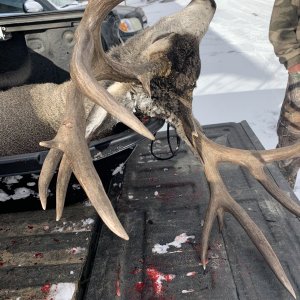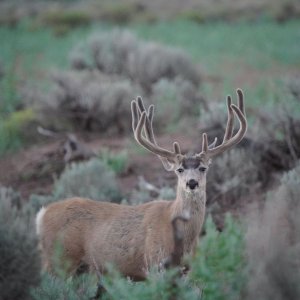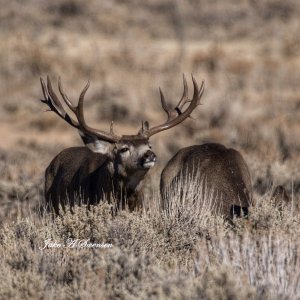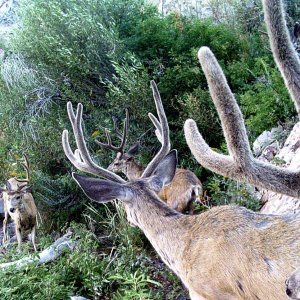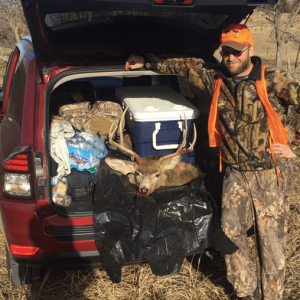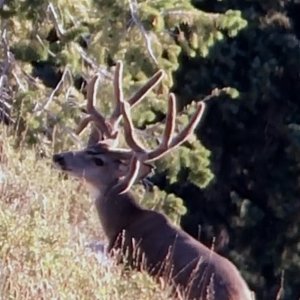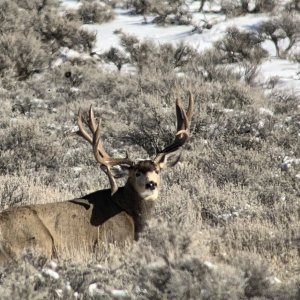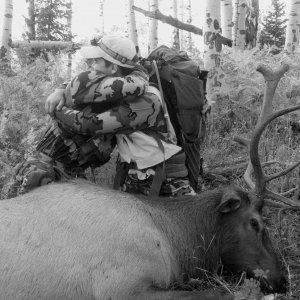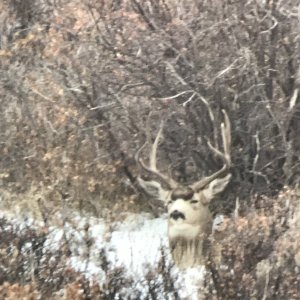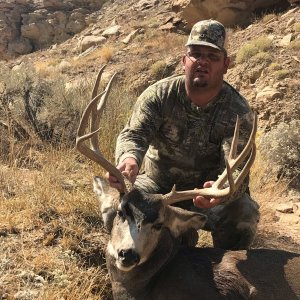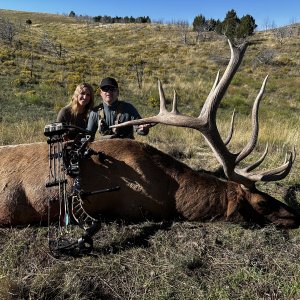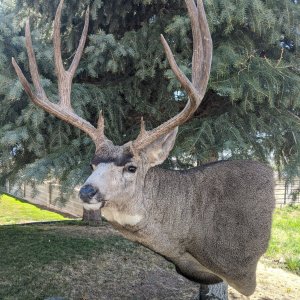OutdoorWriter
Long Time Member
- Messages
- 8,340
New Elk Plan Approved
Salt Lake City -- Elk with large antlers and more chances to hunt spike bulls are what you can expect if you hunt elk in Utah in the next five years.
At their March 31 meeting, members of the Utah Wildlife Board revised Utah?s elk management plan.
The plan guides elk management in Utah. It's updated every five years.
Two highlights from the revised plan include:
- changes that will keep plenty of bulls with large antlers on selected units in Utah.
- more spike bull elk hunting permits.
Survey and committee
Utah?s 15-member Elk Advisory Committee helped the Division of Wildlife Resources draft the revised plan. The group suggested the updates after reviewing a recent survey of Utah elk hunters.
DWR biologists surveyed more than 16,600 elk hunters. The hunters were randomly chosen from the more than 76,800 hunters who either applied for or obtained a Utah elk hunting permit in 2009. The hunters included both limited-entry and general-season hunters.
A summary of the survey results is available at www.wildlife.utah.gov/public_meetings/next.php.
Older bulls
When they draw a Utah limited-entry elk permit, hunters want to take a bull that has large antlers. ?That's one of the things that jumped out from the survey,? says Anis Aoude, big game coordinator for the DWR. ?Taking a bull with large antlers is important to limited-entry hunters.?
Utah already produces plenty of big bull elk, including the world-record bull taken in 2008. To ensure big bulls are available in the future, the committee recommended that the age objectives change on various elk units in Utah.
Utah?s limited-entry units are managed so the average age of the bulls hunters take fall into one of four age categories. The age objectives the units have been managed under the past two years, and the objectives they'll be managed under starting in 2010, are as follows:
Categories since 2008
3 - 4 years old (3 units)
4 - 5 years old (4 units)
5 - 6 years old (18 units)
6 - 7 years old (6 units)
Categories starting in 2010
4? - 5 years old (8 units)
5? - 6 years old (13 units)
6? - 7 years old (4 units)
7? - 8 years old (6 units)
Even though the age objectives are higher now, Aoude says the number of limited entry bull elk permits will continue to climb for the next few years.
?It's hard to believe, but many of the bulls on Utah?s elk units are older than the objectives that were just approved,? he says.
?To reduce the number of older bulls, we'll have to increase the number of hunting permits for the next few years.?
Once the average age of the bulls falls to the new objective, Aoude says the number of permits will have to be reduced to reduce the number of bulls hunters take. Taking fewer bulls should keep the average age within the new objective.
More spike permits
While the number of limited-entry bull elk permits will likely go down in the future, the number of general spike bull elk permits will go up starting this fall.
The board raised the number of general spike bull permits to 13,750 for both the 2010 and the 2011 seasons. (In 2009, a total of 12,500 permits were offered.)
If fewer than 20 percent of the spike hunters take a bull during the 2010 and 2011 seasons, the permit cap will jump to 15,000 permits for the 2012, 2013 and 2014 seasons.
?Spending time with family and friends is the most important part of the hunt for general-season elk hunters,? Aoude says. ?That's another thing that jumps out from the survey.?
Aoude says raising the number of spike bull permits accomplishes two things. ?It gives more elk hunters a chance to hunt, and it benefits the elk by reducing the number of bulls in the herds,? he says.
?Right now, the number of bulls per 100 cows is higher than it should be on most of the state?s units. We need to reduce the number of bulls to make more room in the herds for cows and calves.?
For more information, call the nearest Division of Wildlife Resources office or the DWR?s Salt Lake City office at (801) 538-4700.
TONY MANDILE

How To Hunt Coues Deer
Salt Lake City -- Elk with large antlers and more chances to hunt spike bulls are what you can expect if you hunt elk in Utah in the next five years.
At their March 31 meeting, members of the Utah Wildlife Board revised Utah?s elk management plan.
The plan guides elk management in Utah. It's updated every five years.
Two highlights from the revised plan include:
- changes that will keep plenty of bulls with large antlers on selected units in Utah.
- more spike bull elk hunting permits.
Survey and committee
Utah?s 15-member Elk Advisory Committee helped the Division of Wildlife Resources draft the revised plan. The group suggested the updates after reviewing a recent survey of Utah elk hunters.
DWR biologists surveyed more than 16,600 elk hunters. The hunters were randomly chosen from the more than 76,800 hunters who either applied for or obtained a Utah elk hunting permit in 2009. The hunters included both limited-entry and general-season hunters.
A summary of the survey results is available at www.wildlife.utah.gov/public_meetings/next.php.
Older bulls
When they draw a Utah limited-entry elk permit, hunters want to take a bull that has large antlers. ?That's one of the things that jumped out from the survey,? says Anis Aoude, big game coordinator for the DWR. ?Taking a bull with large antlers is important to limited-entry hunters.?
Utah already produces plenty of big bull elk, including the world-record bull taken in 2008. To ensure big bulls are available in the future, the committee recommended that the age objectives change on various elk units in Utah.
Utah?s limited-entry units are managed so the average age of the bulls hunters take fall into one of four age categories. The age objectives the units have been managed under the past two years, and the objectives they'll be managed under starting in 2010, are as follows:
Categories since 2008
3 - 4 years old (3 units)
4 - 5 years old (4 units)
5 - 6 years old (18 units)
6 - 7 years old (6 units)
Categories starting in 2010
4? - 5 years old (8 units)
5? - 6 years old (13 units)
6? - 7 years old (4 units)
7? - 8 years old (6 units)
Even though the age objectives are higher now, Aoude says the number of limited entry bull elk permits will continue to climb for the next few years.
?It's hard to believe, but many of the bulls on Utah?s elk units are older than the objectives that were just approved,? he says.
?To reduce the number of older bulls, we'll have to increase the number of hunting permits for the next few years.?
Once the average age of the bulls falls to the new objective, Aoude says the number of permits will have to be reduced to reduce the number of bulls hunters take. Taking fewer bulls should keep the average age within the new objective.
More spike permits
While the number of limited-entry bull elk permits will likely go down in the future, the number of general spike bull elk permits will go up starting this fall.
The board raised the number of general spike bull permits to 13,750 for both the 2010 and the 2011 seasons. (In 2009, a total of 12,500 permits were offered.)
If fewer than 20 percent of the spike hunters take a bull during the 2010 and 2011 seasons, the permit cap will jump to 15,000 permits for the 2012, 2013 and 2014 seasons.
?Spending time with family and friends is the most important part of the hunt for general-season elk hunters,? Aoude says. ?That's another thing that jumps out from the survey.?
Aoude says raising the number of spike bull permits accomplishes two things. ?It gives more elk hunters a chance to hunt, and it benefits the elk by reducing the number of bulls in the herds,? he says.
?Right now, the number of bulls per 100 cows is higher than it should be on most of the state?s units. We need to reduce the number of bulls to make more room in the herds for cows and calves.?
For more information, call the nearest Division of Wildlife Resources office or the DWR?s Salt Lake City office at (801) 538-4700.
TONY MANDILE

How To Hunt Coues Deer


